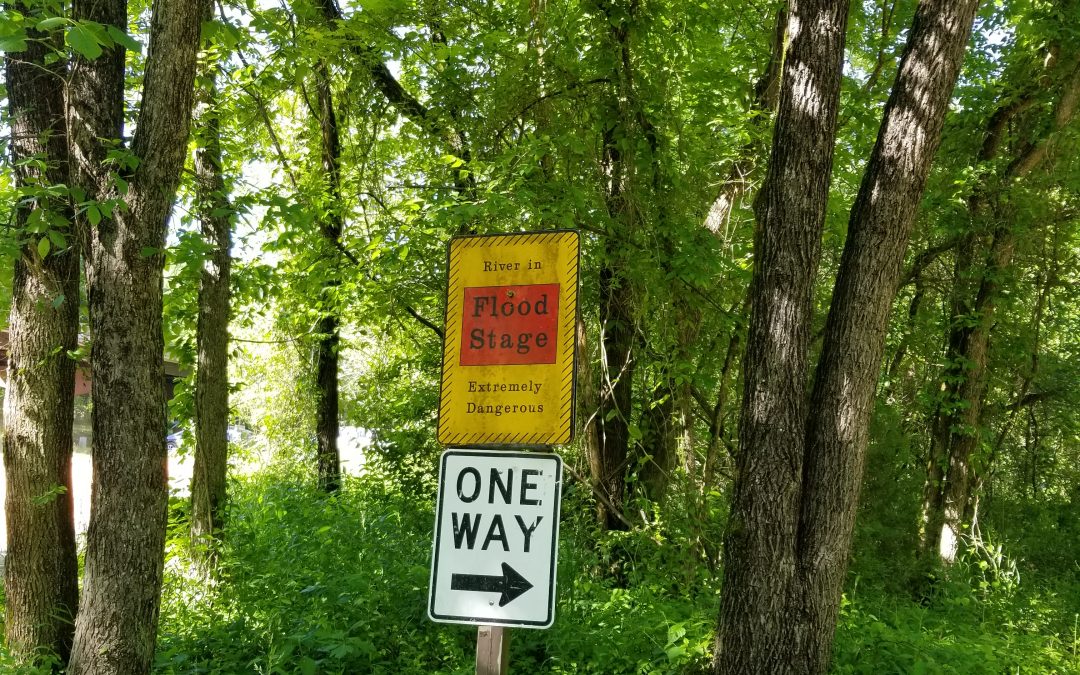Ah, (late) spring. The time when every young (and old) adventurer’s fancy turns to water. Fellow adventurers, there’s no doubt! We’ve had plenty. Unfortunately we’ve also had plenty of tragedies to go along with it. Sometimes despite our best efforts things go wrong on the water, but there are preparations we can make to minimize the risk. Let’s discuss. Many of you are already well-acquainted with boating best practices, but there’s no such thing as too much knowledge, so indulge me.
The well-executed float trip begins before you even leave the driveway. What’s the water level on my object of desire? Is it appropriate for my group’s skill level? Drownings occur every year simply because floaters weren’t aware they were headed for high water. Fellow adventurers, please don’t do that. The answers to these questions are a mere click away, so there’s no excuse not to have them in advance.
Are there any new hazards on the river I want to run? This is an important question, especially after high water events, and we’ve had lots of those this spring. There are all sorts of resources, from Facebook groups to paddling clubs to outfitters, available for recent beta on river hazards. Don’t go until you know.
Are my (and my crew’s) skills sufficient? We’ve all found ourselves in a little over our heads on occasion. Heck, it just happened to me! That’s not what we’re talking about though. If you’re not sure, ask. Be honest with yourself and the person or group you’re asking. There’s no shame in dialing back the challenge a little to match your skill level. We all want to be pushed at times, but there’s a right and wrong way to go about it.
Speaking of the right and wrong way, let’s talk through some floating dos and don’ts.
Do listen to your gut. Call it instincts honed by evolution, the universe speaking to you, a higher power or whatever you want, but listen to that little voice telling you to proceed with caution or not at all. It could mean the difference between a good day and a bad day for you and your crew.
Do wear your PFD (personal flotation device), even if you’re a good swimmer. All sorts of things happen, even to good swimmers. If you become disoriented or weakened by a long swim will you still be a good swimmer? What about a blow to the head from a boat, paddle or limb? It’ll be too late then.
Do adequately secure your stuff, including your trash. My friends and I have pulled hundreds of tons of it from our waterways over the years. Keep it all in a secured container. It’s the right thing to do, and it’s the law.
Do choose the appropriate boat. Perhaps you’ve heard the pejorative boat snob. I’ve been called one myself, but I’m not. I believe the best boat is the one that gets you on the water… safely, but fellow adventurers, there’s just no getting around it. Many of the kayaks and canoes on the market today simply aren’t appropriate for some of the places folks are taking them. Please consider carefully whether that kayak or canoe you bought at the big box store is a good choice for the day you have planned. If you’re not sure, ask. Stranded on a gravel bar with a wrapped boat is not the time to address that question.
Don’t tie anything to your kayak or canoe. It creates entrapment hazards and adversely impacts the way your boat handles. I recently watched a very sketchy situation unfold as a result of this unfortunate practice. Fellow adventurers, it’s very dangerous. Please don’t do it.
Don’t overindulge. There’s nothing wrong with enjoying a frosty beverage or few on the rio, but please keep your wits about you. You never know when you’ll need them. Also, no one likes an obnoxious drunk on the water, especially the rescue personnel who have to pull said obnoxious drunk off (or out of) the water.
Don’t carry glass on the river. It’s illegal and dangerous. Glass finds its way to the riverbed to be encountered later by unsuspecting feet. No bueno.
We could go on, but those are the basics for a good day on the river. Keep them in mind, and we will…
See you out there!
Deuce




